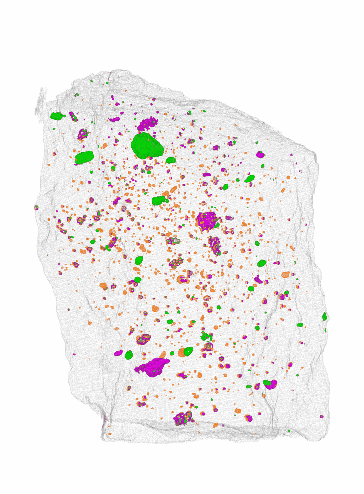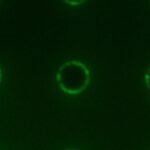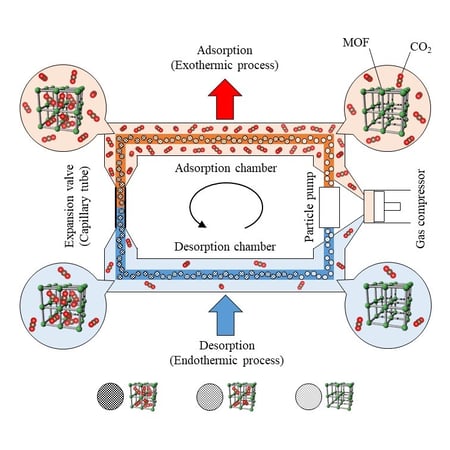2022-11-03 米国国立標準技術研究所(NIST)

Movie of the meteorite EET 87503 depicts overlay of X-ray and neutron imaging. Purple and orange denote two different classes of iron-rich minerals; green denotes minerals that contain water in their structure.
Credit: NIST
今回のパイロット研究では、複合的なイメージング手法の精度を評価するために、鉱物と水の含有量がすでによく知られている2つの隕石を調べました。一つはEET 87503と呼ばれるもので、大型の小惑星ベスタの表面から採取された破片ですが、水を多く含む別の種類の小惑星の物質も含まれています。もう一つの隕石、GRA 06100は鉄とニッケルに富み、コンドライトと呼ばれる、太陽系初期から溶融などで変化していない岩石に分類される。また、過去に水に触れて形成された水素を含む珪酸塩を多く含んでいる。
隕石の3次元画像を作成するために、研究者たちは、X線と中性子ビームを使用して岩石の断面を撮影した。そして、異なる断面の個々の画像を組み合わせて3D画像を作成する、トモグラフィーと呼ばれる手法を用いた。
この画像処理により、2つの隕石中の金属を多く含む鉱物、ケイ酸塩鉱物、水、その他の水素化合物の位置が正確に判明した。中性子イメージングにより、GRA 06100のコンドライト粒子が特定され、さらに詳しい研究のために抽出された。3D画像は、水がどのようにして岩石に入り込んだのか、液体がどのような経路で鉱物の組成を変化させ、試料に結合したのかという理論を検証することができる。
<関連情報>
- https://www.nist.gov/news-events/news/2022/11/research-rocks-combining-neutrons-and-x-ray-imaging-nist-scientists-study
- https://onlinelibrary.wiley.com/doi/10.1111/maps.13904
隕石の中性子・X線コンピュータ断層撮影のコーディネート 水素含有物質の検出と分布 Coordinated neutron and X-ray computed tomography of meteorites: Detection and distribution of hydrogen-bearing materials
Allan H. Treiman,Jacob M. LaManna,Daniel S. Hussey,Isabella deClue,Lawrence M. Anovitz
Meteoritics and Planetary Science Published: 29 August 2022
DOI:https://doi.org/10.1111/maps.13904
Abstract
The presence and distribution of hydrogen-bearing materials in meteorites are important constraints on processes in the early solar system, and the delivery of volatile constituents to growing planets. Here, we show that coordinated neutron and X-ray computed tomography, NXCT, can reveal the presence and distributions of hydrogen-bearing materials in meteorites, and thus help constrain the presence and actions of water in the early solar system. NXCT is nearly nondestructive of meteorite samples. Neutron fluence in NXCT is approximately seven orders of magnitude less than in typical instrumental neutron activation analysis, and so produces little residual radioactivity and currently undetectable changes in isotope ratios. Heating during NXCT is minimal, but NXCT will overprint the record of cosmic ray exposure held in natural thermoluminescence. Two meteorites were examined. EET 87503 is a howardite, a regolith breccia inferred to be from the asteroid 4 Vesta, and contains fragments of eucrite basalt, diogenite pyroxenite, and H-rich carbonaceous chondrites. With NXCT, the chondrite fragments within the meteorite piece can be clearly located and characterized, in preparation for possible extraction and detailed analyses. Graves Nunataks (GRA) 06100 is a CR2 chondrite meteorite that contains abundant iron metal and H-bearing silicates from aqueous alteration. In NXCT, H-bearing altered material is clearly distinguished from metal, and its distribution in three dimensions is revealed as a constraint on the processes of alteration.



